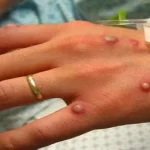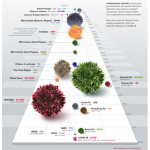Related Articles
Infectious Disease Catastrophic Events
Disease. Think about that word in its parts… “dis” and “ease.” Dis-ease. The Latin prefix meaning of “dis,” is “apart” or “away from” and combined with the word “ease,” “being in ease” …well, you get the picture. Disease… the constant plague of mankind. No pun intended. Suffering, discomfort and many times death.
Infectious Disease Catastrophic Events can either occur naturally or by intentional Biological Warfare. Infectious Disease knowledge and planning is a must for your Neighborhood Protection Plan (NPP) survival. Typhoid Fever, Amoebic Dysentery, Typhus… to name a few will reappear. The mouth foaming and extremely contagious disease called Rabies will proliferate in animals and spread to humans.
The common rat will come back into prolific being quickly as the result of massive amounts of improperly disposed trash, waste and the abundance of unburied bodies, which they will feast on. Diseases like the Bubonic Plague, spread by fleas on rats and animals… may become a reality again.
My attempt is to provide basic information on disease that the Layman can understand. I’m not a doctor or medical person, just like most of you Readers of this book are not… so use this information at your own risk. I will give an overview only of proven basics as a guide to survive endemic, epidemic and pandemics and try to make it understandable.
The next few pages give you an outline of disease so you hopefully can better deal with the subject of this Chapter… which concentrates on the basics of surviving infectious viral and bacterial diseases.
Expect Martial Law, forced Quarantine and economic catastrophe
Collateral issues of an epidemic or pandemic, in addition to restrictions on movement are… possible rationing, water shortage, medical services and supply shortages, and severe economic disruption… aside from the sickness and death that may consume people. So, pay heed to the rest of the Civil Defense Manual.
Although an epidemic or pandemic is not beyond the realm of being purposefully created for government control, let’s take the benefit of the doubt and say it’s not in this Chapter. So, no one should argue with the temporary, forced Quarantine and imposition of Martial Law in the attempt to control, contain and conquer a life-threatening disease for the good of all people… all of us humans. As long at this suspension is temporary.
And for those of you with the attitude… “They’re not going to tell me what to do!” …try to argue the Constitution and your Bill of Rights with a 24-year-old battle hardened veteran of Afghanistan and Marine Corps Lance Corporal, at the first road block or check point you come across.
You’ll end up face down on the ground with a zip-tie around your wrists, asunga (Mashona for arrested) and shoved into the back of an MRAP vehicle with the other “They’re not going to tell me what to do!” people like you. So do your best to cooperate with authority… in the case of Infectious Diseases… they’re just trying to do their job in the interest of everyone. If the suspension of Civil Liberties is more than temporary… I know what most Americans, including the Marine Corps Lance Corporal, will do.
Most people are unaware…
…of the fierce theoretical battle fought between two French Scientists almost 150 years ago that set the foundation on which all future medicine is based. A battle that even the Catholic Church weighed in on heavily, blacklisting Bechamp’s research papers and works, favoring Pasteur’s theory. This was the battle between the theories of Louis Pasteur and Antoine Bechamp.
Bechamp’s (pronounced Bay-cham) Terrain Theory claimed that unfavorable host (the human body) and environmental conditions destabilizes the host’s native microzymas (molecular granulations in bodily fluids), whereupon they decompose host body tissue by producing pathogenic bacteria, thus being the cause of disease. So like soil… the Terrain of the host has to be healthy to repel or destroy the germ.
Pasteur, on the other hand, claimed his Germ/Cell Theory was the cause of disease… and consequently required vaccines to cure most maladies. In a travesty of science, the Roman Catholic Church intervened and made the decision… “blacklisting”
Bechamp’s Terrain Theory writings as profanation and blasphemy. You know who won… the good Catholic Pasteur. Even though Pasteur plagiarized some of Bechamp’s work, that got buried by the adulations of his fame and the brilliant promotion of his work. So, the Germ-Cell-Pathogen theory of Pasteur dominates modern medicine and science and will be the basis of what you read in this Chapter.
However, no one has ever totally disproven Bechamp’s microzymas theory as being the basic building block of life. Bechamp’s theory of a healthy host avoiding disease is certainly true. Claude Bernard, one of Pasteur’s closest friends believed that, despite their friendship, Bechamp’s Terrain Theory was correct regarding humans falling ill from disease. Towards the end of his life Pasteur even remarked… “Bernard is right. The germ is nothing, it’s the soil (Terrain Theory) that is everything.”
Regardless, the reason I bring this up is that in many ways Bechamp’s theory, microzymas existence and importance aside, definitely has a profound effect on why people get sick. People who have unhealthy bodies become the perfect host, subject to Infectious Diseases, mostly because of the destructive way they live and harmful things they use and consume… and what they need, but don’t consume. Consuming food full of chemicals alien to them and devoid of trace minerals, vitamins and nutrition… makes a very unhealthy body.
It is unchallenged that a healthy body can fight off some diseases completely… and give you better odds of surviving other diseases simply because the immune system of a healthy person is much more robust and can repel or kill pathogens.
This Chapter is not intended to be a “How to live healthy primer” or a Biology 101 class that you’ve either forgotten, were in a zombie state of mind attending, or slept through… but to give you some practical information on dealing with disease. It is critical that you understand the basics of disease before you learn how to survive it. One of the first things you can do is to learn to live a healthy life and teach your family so.
The four main classifications of disease are…
#1. infectious viral and bacterial disease #2. deficiency disease #3. hereditary disease #4. physiological diseases
#1 Infectious viral and bacterial diseases
Virus produced: The deadliest of all diseases with the highest fatality rate is Weaponized Small Pox, which is a genetically engineered version of deadly smallpox, reportedly has a 99.9% fatality rate… and is a virus. Weaponized simply means it’s capable of being delivered long range by missile, aircraft or artillery shell as a Biological Weapon. After the explosion and dispersal the bacteria or virus is still as deadly as it was to start with. Freezing of a virus during delivery is one method that accomplishes this.
Some virus caused diseases are: Chickenpox, Cholera, Dengue, Ebola, Flu (influenza), Hantavirus, Herpes, Human immunodeficiency virus (HIV/AIDS), Human Papillomavirus (HPV), Infectious Mononucleosis, Marburg, MERS-CoV, Measles, Mumps, Rabies, Rotavirus, Rubella, SARS-CoV, SARS-CoV-2, Shingles, Tuberculosis, Typhus, Viral Gastroenteritis (stomach flu), Viral Hepatitis, Viral Meningitis, Viral Pneumonia are also the result of viruses.
Between people, some of these viruses are contagious, some are contagious only at certain stages, some are not directly spread between people. Some Infectious Disease viruses spread to people from an animal or insect, but are not contagious person to person. For Example: You can’t get a viral caused Sexually Transmitted Disease (STD) from infected Jane hanging around the street corner unless you are… well… let’s hope you and Jane aren’t doing that on the street corner.
Dictionary Definition
virus
noun
vi·rus /ˈvīrəs/
Defintion of virus: Any of a large group of submicroscopic infectious agents that are usually regarded as nonliving extremely complex molecules, that typically contain a protein or fat coating surrounding an RNA or DNA core of genetic material, which is the viral envelope, that are capable of growth and multiplication only in living cells; A virus is not “alive” when measured against the factors that define “life, or a living organism;” “A virus or viral infection;” Another name for a disease causing virus is that it is a Pathogen.
Origin: Late Middle English (denoting the venom of a snake): from Latin, literally “slimy liquid, poison.” The earlier medical sense, superseded by the current use as a result of improved scientific understanding, was “a substance produced in the body as the result of disease, especially one capable of infecting others.”
Bacteria produced: An often cited case of a disease that wiped out millions in Medieval times in reoccurring epidemics is the Bubonic Plague, also referred to as The Black Death… which was caused by a bacteria transmitted by flea bites from infected rats to humans.
In addition to Bubonic Plague, other bacteria caused diseases are: Anthrax, Cholera, Infectious Diarrhea, Leprosy, Salmonella Typhi-which is almost drug resistant, Syphilis, Tuberculosis, Pneumonia and the “super bug of all” Staphylococcus Aureus, more commonly known as MRSA (which stands for Methicillin-resistant Staphylococcus aureus). This is antibiotic resistant and the curse of hospitals and medical clinics.
Between people, some of these bacteria are contagious, some are contagious only at certain stages and some do not directly spread between people. Some Infectious Disease bacteria spread to people from an animal or insect, but are not contagious person to person. For Example: You can’t get the Lyme Disease bacteria hanging around a street corner with infected Joe. He got it from a tick bite.
Dictionary Definition
bacteria
noun
bac·te·ria \ bak-ˈtir-ē-ə
Defintion of bacteria: Bacteria are microscopic living organisms, usually one-celled, that can be found everywhere and can be dangerous, such as when they cause infection, or beneficial, as in the process of fermentation (such as in wine) and that of decomposition; Another name for a disease causing bacteria is that it is a Pathogen.
Origin: In 1676, Anton Van Leeuwenhoek first observed bacteria through a microscope and called them “animalcules.” In 1838, the German Naturalist Christian Gottfried Ehrenberg called them bacteria, from the Greek baktḗria, meaning “little stick.” A graphic word, as the first observed bacteria were shaped like rods, although bacteria can also be spiral or spherical in shape. A grammar note: The word bacteria is the plural form of “bacterium” and so should be written as plural, as in “Many bacteria are harmless.”
#2 Deficiency diseases…
Also considered malnutrition… are diseases caused by the absence of essential vitamins needed for the proper growth and maintenance of the human body. Scurvy… literally bleeding from the gums and bleeding from old wounds opening. Scurvy is caused by lack of vitamin C. It used to be the sailor’s malady once mankind began long voyages. The British quickly cured it by having their sailors consume limes, full of vitamin C. Hence the nickname “Limeys” that the British were alternately referred by.
Other examples of deficiency diseases are: Iron deficiency which causes anemia… Iodine deficiency, which creates a horrible looking enlarged thyroid gland thing called a goiter, like having a basketball tied up under your throat… Vitamin D deficiency which causes rickets, or bow legs, mostly in children (Sammy Davis Jr. had this because his Father let him live on chocolate as a small child)… and the curse of Beriberi, where all muscle control is lost and heart failure usually occurs when the body is deficient in vitamin B1. You get B1 from meat, cereal grains, yeast and nuts.
#3 Hereditary diseases…
Examples are cystic fibrosis, in which the body produces thick and sticky mucus that clogs the lungs, making breathing difficult and also plugs the pancreas; sickle cell anemia, which is more common in black people but can affect any race and the body literarily shrivels up and dies as it starves the body of oxygen;
Hemophilia, such as the last ruler of Russia before the communist revolution, Czar Nicolas II’s son Alexi had. Simply put, a scratch that is nothing more than annoying to the normal person, is a death sentence to a hemophiliac… they will bleed to death. Their blood will not clot to stop the bleeding. This has nothing to do with lack of vitamin K, the body’s clotting agent.
#4 Physiological diseases…
…occur when the organs or components of the body don’t work fully as intended, causing illness such asthma (Constricted airways and labored breathing); glaucoma (over pressure of the fluid in the eyeball causing blindness); diabetes or “sweet urine” as in the Latin meaning. I cringe at the thought of people tasting each other’s urine, which is what they did and how the name came about.
Well, if you don’t know what it is… diabetes is the scourge of America and the Industrialized world. It will trash the entire body, destroying organs, causing gangrene and amputation of extremities, blindness, cause heart failure and other issues… because of excess glucose in the blood. Many doctors claim diabetes is hereditary, or a genetic disease, but I disagree with that as my other 8 diabetes-free Siblings do. As fit and muscular as I am… I fricking have it. Sitting on nuclear weapons while installing the arming packages… radiation, is my belief.
An overview of Infectious Diseases…
Infectious Diseases are caused by Pathogens… which can be a… A. virus, B. bacteria, C. fungi, D. parasite, E. prion and F. parasitic worm infestation in the body.
A. Virus produced: The deadliest of all diseases with the highest fatality rate is Weaponized Small Pox, which is a genetically engineered version of deadly smallpox, reportedly has a 99.9% fatality rate… and is a virus. Cholera, Typhus, Ebola, Tuberculosis, Measles and the good old flu are also the result of contagious viruses.
B. Bacteria produced: An often cited case of a disease that wiped out millions in Medieval times in reoccurring epidemics is the Bubonic Plague, also referred to as The Black Death… which was caused by a bacteria transmitted by flea bites from infected rats. Other bacteria caused diseases are anthrax and salmonella typhi, the latter of which is almost drug resistant.
C. Fungi produced: An example is histoplasmosis which causes lung infections and can cause severe skin lacerations.
D. Parasite produced: One of the greatest killers in Africa is Sleeping Sickness, known by its proper name Trypanosomiasis. Sleeping Sickness and Malaria are both caused by parasites.
E. Prion produced: Prions, or proteinaceous infectious particles consist only of protein. Prions cause the variant Creutzfeldt-Jakob disease in humans and “mad cow disease” in cattle. These are abnormal “zombie like” proteins and when they come in contact with similar normal proteins, turn them into prions like themselves.
This eventually riddles the brain with holes. Prions arouse no immune response in the body and resist heat, ultraviolet light, radiation, and sterilization. They are damned hard to kill and thought to be extremely contagious, making them difficult to control.
My Father-In-Law, extremely intelligent, visionary, healthy and fit, died of Creutzfeldt-Jakob disease at 76 years young. Prions can lay dormant for decades. The doctor said that theoretically, anyone could have prions dormant and see the affliction surface decades later.
F. Parasitic worm (aka Helminths) produced: An example is Dracunculiasis or the Guinea Worm of Africa that can infect you after drinking water infested with its larvae. Oh crap! …you don’t even want to know about this one. If you see pictures of it you’ll have a hard time eating angel hair pasta again!
Again, it is most important to note that by not keeping your body healthy and drinking potable water or keeping hygiene foremost… you welcome some these Pathogens… and the suffering and potential death from them that could be avoided.
G. I add this category to disease… Genetically engineered diseases, “Designer Diseases” and “Chimera technology” I add this category because it is so bizarre and dissimilar to normal Pathogens. It frightens the bejebers out of me that any lunatic, whether they be scientists, those of corporations, organizations or governments would be involved with this experimentation in good conscience. Genetically engineered viruses and bacteria, gene splicing or by whatever other way they labor to create life-threatening, virulent, disease deadly Pathogens. Designer Diseases… insanity.
“Chimera” …from Greek mythology, was a fire-breathing female monster with a lion’s head, a goat’s body, and a serpent’s tail… an imaginary combination of creatures, like right out of a “Frankenstein” story. A Chimera Virus is made by combining the DNA of two or more different viruses. In the 1980’s the Soviets were experimenting with this, using the genetic material from other viruses and injecting them into a smallpox (or another) virus thus producing a “Chimera Virus.” They were successful.
The Chimera process ensures the engineered virus retains the smallpox’s virulence and appearance under a microscope… while at the same time it is able to spread an entirely different Infectious Disease hidden in it.
This genetic engineering breakthrough allows infectious viruses to evade known treatments and vaccines, making them all the more deadly by hiding one disease inside of, what gives the symptoms and appearance as another disease. How can you treat that with medicines, if you aren’t treating or don’t know what the right disease is?
These people are taking some of the most contagious diseases known to man and virtually creating “beings of their own” by “turbo charging” them… genetically engineering them to be hardy and robust… and to also resist vaccines and antibiotics. When this causes repetitive reoccurrence in those who have recovered from it, this of extreme concern. The meek may not inherit the earth as the Good Book says… it may be a virus created by these fools.
A disease that repeatedly reoccurs in survivors and has the potential to create a never ending chain reaction “Doomsday Scenario” unto itself, has unquestionably been genetically engineered. The human body generally creates a natural immunity to an Infectious Disease in survivors once they have had it.
Not only do these “designer diseases” defy normal procedures for control, some are almost impossible to eradicate. They are Frankenstein Monster diseases. But, the people who create these are not of sound mind if they are willing in their purpose. It is the rare mentally ill person who has any concept of rational thinking, any morals or compassion towards others.
As I write this the Coronavirus epidemic, also known as Covid-19 is raging around the world. I will use the Coronavirus as an example in some situations, but I will not concentrate on that particular disease. There is no doubt in my mind that this virus was genetically engineered and evidence of that can be traced back to 2015 by some sources.
According to what information is available and my sources, the Chinese People’s Liberation Army has 8 biowarfare research and manufacturing facilities in mainland China… one of them being in Wuhan. It has a flowery civilian research sounding name… “The Wuhan Institute of Virology.” It reportedly cost 44 million USD (that amount buys a lot in China) to build and was the first Chinese Bio Safety Level 4 research facility in mainland China. The safest and most secure of biolabs.
Further, it is a good possibility that the SAARs virus of 2003 came from a facility in this area. So, who knows if People’s Biological Warfare Factory #2 exists there also, like People’s Tractor Factory #4 exists somewhere in China. Who the author and creator was and where the origination of this strain of Coronavirus was… Canada, the United States or China… is another question. Regardless, this epidemic originated in China either accidentally or purposefully… so I call it the Chironavirus (China + Corona + Virus = Chironavirus).
Hysteria over Coronavirus at this point is an understatement. Tuberculosis killed 1,600,000 plus people worldwide in 2017… and at this time of writing some 31,000 people have died worldwide the last 120 days since the emergence of the Coronavirus, COVID-19. This is around 2% of those infected.
However, two wild cards in the fatality rate of any disease are the success of control (containment) and the Quarantine hospitalization and care of those most affected by the disease. See the below charts in the “Control” and “Quarantine” sections. In the case of Coronavirus, the fatality rate has gone over 15% in areas where medical facilities are inadequate or have become overwhelmed with infected people and unable to give proper medical attention to individuals as they require it. The death rate is rumored to be way higher in China… up to 30% or higher. Who knows? The Chinese Communists have never reported the truth of their disasters.
Whether this disease becomes more deadly and cannot be stopped or will blow over with warm weather like the flu is yet to be seen. I am convinced that I had some version of the Chironavirus a year ago after Christmas and exposure to visiting family. The same symptoms and the sickest I’ve ever felt in my life including the almost suffocating chest congestion. I personally think it will become forgotten by most in a few months, but reoccur as part of our family of “Cold Weather” viruses… by the “Once the Genie is out of the Bottle” principle.
I believe the Southern Hemisphere, just coming into winter, will be the home for this until next winter in the Northern Hemisphere. So, other than maintaining your health to the best degree possible, your first defense against this disease and all Infectious Disease Pathogens… is prevention.
Know your disease Pathogen
This Chapter concentrates on prevention, control, Quarantine and treatment, because to list diseases, their symptoms, incubation periods, how contagious they are, Quarantine procedures, how they are transmitted and how to treat them is impossible to do in this book.
You need to have a Handbook on Infectious Diseases. So, see the Resource on Communicable (infectious) Diseases section in this Chapter and get yourself at least one book and as much simple information as you can.
One of the first issues your need to deal with is to have information on the characteristics of the epidemic disease.
- What are the symptoms… and what disease does that tell you it is?
- How long is the disease incubation period?
- How contagious is the disease?
- How is the disease transmitted, what actions do you take to contain it?
- What mask type and protective gear is needed for that disease?
- What Quarantine procedures are necessary?
- How is the sickness and disease treated?
Resources for communicable (infectious) diseases
You must have a handbook that gives you basic information in layman terms on communicable diseases. You especially have to know how to identify the symptoms of communicable (infectious) diseases, the incubation period, how contagious the disease is, the control of it, Quarantine and treatment procedures.
You can buy books relating to this on Amazon, eBay and from other book sellers.
A book that is a must is: “Control of Communicable Diseases Manual” by Heymann.
Two other free resources to download and print a hardcopy of the State “Kansas Handbook of Communicable Diseases” which is on the internet at:
http://www.kdheks.gov/epi/download/Kansas_Classroom_Handbook_of_Communicable_Diseases.pdf
Or, the manual from the State of New Hampshire titled: “Disease Handbook for Childcare Providers” which is also on the internet at:
https://www.dhhs.nh.gov/dphs/cdcs/documents/handbook.pdfDisease
Viruses kill by…
Viruses are like airline hijackers. Only, they just don’t hold your cells hostage by hijacking them when they invade, they take over and use the cells to make billions of more copies of themselves… destructive viruses like themselves… more hijackers. These virus copies invade other cells and overwhelm the body causing organs to stop functioning among other issues.
Viruses can kill, damage, or change the cells and in the process make you sick and kill you. Different types of viruses attack specific types of cells such as those of your liver, respiratory system, or blood. Think… the office copy machine going berserk and killing everyone who could not escape the copy room by suffocating or crushing them with paper.
Bacteria kill by…
Bacteria multiply so rapidly in your body that they crowd out host tissues and disrupt normal bodily function. They can kill cells and tissues outright or make toxins that can paralyze, destroy cells’ metabolic function or create a massive immune reaction by your body trying to fight them off that is toxic in itself. Think… gobs of internal pus plugging up the body as it becomes poisonous to itself.
Incubation periods
The invisible and variable incubation period. Most infectious and contagious Pathogens have an incubation period during which the person that it is incubating in, is also contagious to others. They may not show symptoms of the sickness, but they can spread it to others just the same. For example, Chicken Pox incubates from 14-16 days from the first infection of a person to the signs of sickness. During this period, the person is infectious to others.
During the incubation period, the Pathogen is getting accustomed to the body’s chemistry and is beginning to spread. It is “making itself at home… rather taking over the house.” The incubation period of different viruses and bacteria varies, but is from the first moment a person has been in contact with the Pathogen by which it has entered your body, to the time when sickness shows.
So to be hyper-vigilant and on the safe side, you may want to institute some degree of the same precautions you use outside your home… inside your home also. You obviously don’t want to eat, sleep, breath and try to relieve yourself wearing a Tyvek suit, googles, gloves and mask. But washing hands, disinfecting items and surfaces, general hygiene and precautionary rules can still be taken until you know sickness has shown in others, if it does… until the disease outbreak passes.
Pathogens enter your body by the following means…
Contact transmission of Pathogens. This can be direct or indirect. Touching the infected person or contacting Pathogens the infected person has put on other items. These are “smear” transmissions and oral/fecal transmission. They enter your body by…
- Mucus membranes… of the eyes, nose, mouth and gums, sinus system and respiratory system by inhalation. Lungs and airways are especially prone to infection.
- Membranes… the ear canals, urogenital openings (penis, vagina) and anus.
- Open cuts, abrasions, bites and wounds.
- Some Pathogens by direct contact with infected skin.
- Some Pathogens by exchange of bodily fluids and fecal matter.
Airborne and or Contact Transmittal of Pathogens (Aerosol Transmission). This can be by inhalation of spores, such as in Anthrax infection, or inhalation of droplets of aerosolized mucus or saliva with high enough viral load (a high volume of virus in a given amount of liquid-the higher the amount of virus in the fluid, the greater chance of infection).
Let’s start with the basics… the four lines of defense against Infectious Disease are…
#1A Avoidance #1B Hygiene procedures #1C Disinfecting #1D Physical barriers #2. Control #3. Quarantine #4. Treatment
#1… keeping the disease out of your body
The first line of defense against Infectious Disease is to keep the Pathogen out of your body.
#1A. Avoidance.
Your first line of defense against an Infectious Disease is to prevent your infection by it. After a healthy body with a robust immune system defense, the next procedure in prevention is not giving the Pathogen entrance to your body.
Natural barriers of the body include the skin, mucous membranes, tears, earwax, mucus, and stomach acid. Also, the normal flow of urine washes out microorganisms that enter the urinary tract. The immune system uses white blood cells and antibodies to identify and eliminate organisms that get through the body’s natural barriers.
A Mindset of Awareness is being fully aware of everything you touch, drink, eat, every breath you take, how close you are to others, who is sick and where they are and have been. It is an attitude that heightens your thought to all items and people contaminated and how to avoid them.
When you are in an area that has Infectious Disease… you must have a Mindset of Awareness…
- One big one is to avoid touching your face… nose, lips, mouth and eyes. Your hands are contaminated! Pretend you’re using Tabasco Hand Sanitizer like in the gag-joking photo here and that your hands are contaminated. In reality, I love Tabasco… it spices up food and kills bacteria. Because they are before you thoroughly wash them. Wash your hands frequently like you have had that wonderful, spicy hot, concoction Tabasco on them that irritates the skin and eyes if you get it on your fingers and touch there. Avoid touching others, don’t touch Fomites (items) others have touched
- Disinfect and or avoid touching or handling “fomites.” Fomites are objects or materials which are commonly touched by more than one person and are likely to carry infection, such as clothes, eating and drinking utensils and furniture. Use a knuckle or elbow or use a one-time use tissue or cloth when touching or handling commonly used surfaces or items like elevator buttons, door knobs, public bathroom facilities, counter and table tops, magazines and restaurant menus, salt, pepper, spice and condiment containers. Disinfect keys, wallets, purses, eyeglasses, watches, phones, jewelry and other items that you have handled before you wash your hands.

- Wear Facemasks. Wear an N-95 equivalent or better mask to filter out spores and aerosol transmissions from others coughs and sneezes when in an area that has Infectious Disease. The “N95” designation means that when subjected to testing, the respirator blocks at least 95 percent of very small 0.3 micron particles or greater. See Matt Bracken’s DIY N-95 equivalent Facemask in this Chapter.
- Wear wrap around eyeglasses or goggles when in an area that has Infectious Disease. Take them to a sink and wash thoroughly, immediately after entering your home.
- Wear gloves when in an area that has Infectious Disease. Wear disposable gloves or those you can wash, when out in public areas and around crowds. Discard before going into your living quarters.
- Change shoes before entering your home. After being around crowds or in areas known to have Infectious Disease, change shoes and leave the others outside your home.
- Change clothes before entering your home. Launder and dry clothes you wore when in an area that has Infectious Disease.
- Treat anything coming into your NPP, home or work place as if it is contaminated. That means EVERYTHING that crosses the threshold of your house or workplace door … food, mail, people, those adorable little Grandkids. They’re potential fomites.
- Wash your hands after handling and wipe all packaging with alcohol wet wipes. Wash and rinse vegetables and fruit. Wash your hands before, during and after cooking. Transfer food from outside packaging to clean containers. Periodically empty food waste from your trash receptacles.
- Wash your hands with soap and water for at least a few minutes, scrubbing around your nails and cuticles with your fingers before you touch others or your face or body. Do this each time you have handled items others may have touched and wash hands frequently during the day.
- Assign hand towels for individual use for drying hands after washing hands or use disposable towels. The hand towel is a central distribution item for Pathogens.
- Sip water or fluids frequently during the day, rinse your mouth and swallow some or all of it or spit it out. This can wash Pathogens in your mouth down into your stomach, where stomach acids will kill most. Spitting will expel them completely. This procedure may keep Pathogens from making it down your esophagus, into your bronchial tubes and on into your lungs in the case of Pathogens and spores that cause respiratory problems.
- Keep your fingernails short and clean underneath and periodically use a scrub brush on your fingernails. Under the fingernail is the ideal place for a Pathogen to hide and washing won’t remove most Pathogens.
- Keep your cell phone away from your face. Keep your cell phone and other phones from touching your face or head, because you’ve touched Fomites and your hands are contaminated.
- Cover cuts. Keep all cuts, abrasions, bites and wounds covered and periodically wash and disinfect them. Use silver oxide impregnated Band-Aids and bandages. You that razor shave your face, put on a lotion, use a cut sealer or at minimum aftershave to disinfect even minor cuts and abrasions.
- Change clothes and wash them. Frequently change your clothes and wash and heat dry them. The chlorine in laundry soaps will kill most Pathogens.
- Close the toilet seat before flushing. Contain the aerosol formation in the toilet from churning water action.
- Avoid coughing or sneezing people and their cough “plume” full of Pathogen laden droplets. If you have to cough, bury your head in your elbow when doing so.
- Avoid being around groups of people or areas where crowds have been.
- Avoid shaking hands, fist-bumping, high-fiving or touching others. In time of Infectious Diseases… don’t hug. A pleasant smile and greeting will do. NPP Group Members must practice keeping distance between themselves.
- Avoid using common items (Fomites) others use such as pay phones, magazines or computers.
- Avoid using facilities where crowds of people go.
- Avoid sick people and their environment.
- Keep your trash receptacles empty.
- …and the last one again …don’t touch your face… nose, lips, mouth and eyes. Your hands are contaminated! Avoid touching the face, since the majority of Pathogen entry points are in the head. The eyes, mouth, nose and in some situations ears.
#1B. Hygiene procedures.
I don’t have to say “good hygiene,” because that’s what the word means. Unless you were born in a family that lived in a shite-mess, you know what hygiene is.
Dictionary Definition
hygiene
noun
hy·giene / hī jēn
Defintion of hygiene: conditions or practices conducive to maintaining health and preventing disease, especially through cleanliness.
Origin: Late 16th century: via French from modern Latin hygieina, from Greek hugieinē (tekhnē) “(art) of health,” from hugiēs “healthy.”
I watched a man (actually an obese slob) after hearing and about gagging on the smell from him as he walked out of a restaurant toilet stall without washing his hands. I just had to turn from the urinal to see what made that noise and smell. He had a string of toilet paper stuck, I could see with shite, to his hand and wiped it loose on his pants when he paused as he waddled out. Then left, still no washy shite-smeared hands.
When I finished, I took multiple hand towels, carefully opened the bathroom door and walked into the restaurant to rejoin my wife. This “man” was passing a laminated menu around to his wife and children with that shite-smeared hand. The rest of the family appeared obese and unhygienic also.
The hair on the back of my neck stood up… the menu, the table top, the salt and pepper shaker, the ketchup and mustard bottles, the restaurant door, as I thought… other people touch them all! I have never forgotten this atrocity.
The point. I hope that you… like me… are affected by this story to the point that shows you what can be on fomites that unhygienic people touch… that you touch. So, wash your hands after contacting shite (fecal matter), after using bathrooms or just being out where others touch things that you touch. I doubt 80 percent of men wash their hands after the bathroom and I would guess many women don’t. In time of Infectious Disease that negligence will cost people their life.
Don’t use Personal Mucus Collection Rags (PMCRs). That’s what my Son calls handkerchiefs… the cotton cloths carried around in your pocket to blow your nose in or wipe your nose. He won’t use them… asks me why anyone would want to carry around a pocket full of snot. He will use only disposable ones. I can’t prove him wrong on his belief.
So I will say this… maybe it’s okay to use these during the normal flu and cold season, but during time of deadly Infectious Diseases follow my Son’s advice… use disposable tissues, wet wipes, paper towels or napkins… and don’t spray your snot on others. Dispose of tissues hygienically.
Handling and consuming food…
- Avoid touching produce such as vegetables or fruit and packaged food at your grocery store without first putting your hand in one of the vegetable plastic bags provided for unpackaged vegetables and fruit and using it as a glove.
- Transfer food from outside packaging to clean containers.
- Wash and rinse especially vegetables and fruit. These items have been handled by many other people including customers picking over these items.
- Wash your hands after handling and wipe all packaging with alcohol wet wipes.
- Wash your hands before, during and after cooking.
- Assign eating utensils to individuals.
- Brush your teeth. Brush your teeth and rinse your mouth after eating, spit out your rinse.
- Use hot spices on your foods. Spices such as Tabasco, Cholula, chili peppers, garlic, peri peri, do more than spice up food… they kill bacteria. That’s why hot spices originated in temperate and tropical climates, where bacteria quickly grows on foods and they don’t have the refrigeration and or food preservation procedures the Industrialized Countries have. Hot spices assist in killing infectious bacteria also.
- Use real silverware and copperware. Real silver and real copper have built in anti-bacterial properties. Use real, not just copper or silver coated or laminated items.
#1C. Disinfecting.
Viruses… you disable and disrupt their DNA/RNA…
Professor Tamar Kohn, head of EPFL’s Environmental Chemistry Laboratory (A research institute and university in Lausanne, Switzerland) and her team have shown that disinfectants don’t all work in the same way.
Kohn discovered three important functions that must remain intact for a virus to be infectious:1] It must be able to attach to the host cell (get into your body), 2] It must inject its material into the host cell (cells in your body), 3] It then must be able to replicate. Disinfecting disables viruses to stop the last two things happening. Since a virus is not alive, a virus is not killed by disinfecting. A virus is disabled, disrupted and the RNA/DNA that are the virus disintegrate and disperse as harmless components, when you dissolve the Viral Envelope. Then it is unable to attach to a healthy cell or replicate.
Bacteria… you kill…
Alcohol, chlorine bleach and sodium hypochlorite solutions are diehard disinfectants that always work if you have doubts about any of your other disinfectants. They work on both virus and bacteria.
The Lysol™ brand company has experience with disinfecting about everything and produces some of the most robust disinfectants and procedures which you can access at: www.Lysol.com
- Don’t touch your face… nose, lips, mouth and eyes. Your hands are contaminated! Avoid touching the face, since the majority of Pathogen entry points are in the head. The eyes, mouth, nose and in some situations ears.
- Disinfect fomite surfaces. Disinfect anything that is commonly touched or has been touched by sick persons.
- Daily maintenance of living areas. This daily cleaning should be performed more frequently at around all entrance areas and less frequently farther into the center of the living area. First remove dry dust and matter by vacuuming carpeted surfaces. Dust mop then damp mop hard floors. Microfiber floor cleaning mops and dusters, used dry or wet, clean hard floors mechanically by “scraping” the surface meticulously. Use a disinfectant floor cleaner that minimally produces odors.
- Wash dishes and eating utensils used by others in your home with soap and hot water and rinse in a mild bleach solution after washing. It would be prudent to assign dishes and silverware to each individual person in your home which they alone use and clean until the contagion ends.
- Frequently wash clothes. The chlorine in most laundry detergents will kill the majority of Pathogens that are not washed down the drain. If you hang clothes out to dry on a clothesline like your Grandmother did will expose Pathogens to sunlight which will kill most of them.
- Keep trash receptacles emptied of waste tissues and trash.
- The sun is a natural disinfectant which usually comes with warm weather. Africans who feel sick, will lay in the sun for hours and have done this for centuries… we’ve forgotten the healing power of it by getting lost in the genius legend we’ve created in our minds about our “science and medicines.”
- Use hot spices on your foods. Spices such as Tabasco, Cholula, chili peppers, garlic, peri peri, do more than spice up food… they kill bacteria. That’s why they originated in temperate and tropical climates, where bacteria quickly grows on foods. They assist in killing infectious bacteria also.
- Ultraviolet Light (UV-C). This is an alternative disinfectant that kills bacteria and disables Pathogens. There are three Ultraviolet Light wavelengths that make up the sun’s Ultraviolet Rays… UV-A, UV-B and UV-C. You must use a UV bulb or lamp that generates the “C” UV wavelength. At six inches distance, it takes UV-C light 10 seconds to kill bacteria. So, somewhere between10 seconds to 15 minutes to kill bacteria and warp or mutate the RNA and DNA structure of a virus, depending on the distance from the light. In terms of a virus, that destruction of their genetic material keeps them from replicating and virtually renders them harmless. The distance from what you are attempting to disinfect makes a difference… closer-more effective… further-less.
Beware though, UV-C light is very dangerous and neither the body or eyes should be exposed to it. UV-C is filtered out by atmospheric ozone long before it reaches our fragile skin or eyes. With UV-B it may take hours to get sunburn… but with UV-C it takes only seconds. If your eyes are exposed… you get many times the effect as if you look at the sun or an arc welding machine’s blue light. The next day, your eyes will feel like they have grains of sand in them amongst the other damage it does to your vision that you cannot feel, just after a few seconds of looking at UV-C Ultraviolet Light.Scientists are working on a specific range of the Ultraviolet Light “C spectrum” to develop one that kills Pathogens, but does not penetrate or damage skin or harm the human body, eyeballs excluded.
How to make your own hand sanitizer
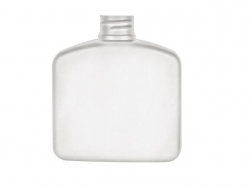
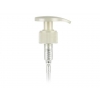
Rich H., a Friend of mine brought this to my attention… DIY home made hand sanitizer. You can get 8 oz. lotion dispensing 8 oz. White 28-410 Squat Flat Sided Oval HDPE Plastic Bottle w/ Pearl Ivory Lotion Pump bottles with a screw on lotion/soap locking head pump for .53 cents each at last checking from MidwestBottles.com in Garrison, KY-(866) 436-6373. I have purchased a number of different types of bottles from these people and have found that they are good have just about anything and everything for containers at:
Be aware that rubbing alcohol in most all hand sanitizer is flammable and every open flame or spark from sources such as cigarette lighters and gas top stove flames may ignite this causing severe burns.
Dr. Rishi Desai’s hand sanitizer recipe…
Dr. Rishi Desai, chief medical officer of Osmosis, and a former epidemic intelligence service officer in the division of viral diseases at the CDC, says that the hand sanitizer recipe below will kill 99.9 percent of germs after 60 seconds.
What you’ll need:
- 3/4 cup of isopropyl or rubbing alcohol (99 percent).
- 1/4 cup of aloe vera gel (to help keep your hands smooth and to counteract the harshness of alcohol).
- 10 drops of essential oil, such as lavender oil, or you can use lemon juice instead.
Directions:
- Pour all ingredients into a bowl, ideally one with a pouring spout like a Pyrex glass measuring container.
- Mix with a spoon and then beat with a whisk to turn the sanitizer into a gel.
- Do not touch the mixture with your hands until it is ready for use.
- Pour the ingredients into an empty bottle for easy use, and label it “hand sanitizer.”
#1D. Keeping Infectious Disease Pathogens out of your body by physical barriers (PPE).
Safe removal of Personal Protection Equipment (PPE)
Protecting, covering and filtering the air around the inhalation areas of the nose and mouth with Surgical Masks, Facemasks and Respirators… covering the body with gloves, Footwear, and clothing accomplishes the intended task, keeping Pathogens out of your body.
However, the way you remove this PPE gear will determine the total effectiveness of your effort… because if you remove it improperly… you can defeat the effort. You can contaminate your hands and face in the process.
When removing PPE gear this procedure is recommended and in this order…
- First, remove your coverall or outer clothing, and then…
- Second, remove your Eyewear by the temples (the foldout thingies that fit over your ears in the case of ridged glasses) or the elastic band at the back of the head immediately pulling the Eyewear away from your face, and then…
- Third, remove your Footwear, and then…
- Fourthly, remove your mask or respirator, and then…
- Shower, wash your face, hands and hair, or wipe your face, hands and hair with alcohol wipes.
Facemasks
Protecting, covering and filtering the air around the inhalation areas of the nose and mouth with Surgical Masks, Facemasks and Respirators.
Surgical Masks are not effective Facemasks. Surgical Masks were first introduced into hospitals in the late 18th Century but they did not make the transition into public use until the Spanish flu outbreak in 1919 that went on to kill over 50 million people. Virtually ineffective.
Actual Surgical Masks are not an effective protection against viruses or bacteria carried in the air because they are too loose, have no air filter and most Facemasks leave the eyes exposed. Surgical Masks have since given birth to a more effective and close cousin… the comfortable, molded, forms close to the face, one size fits all, high efficiency micron level Pathogen removing Facemask. These, however, can let unfiltered air in when talking changes your face contour or if not fitted correctly to the facial contours.
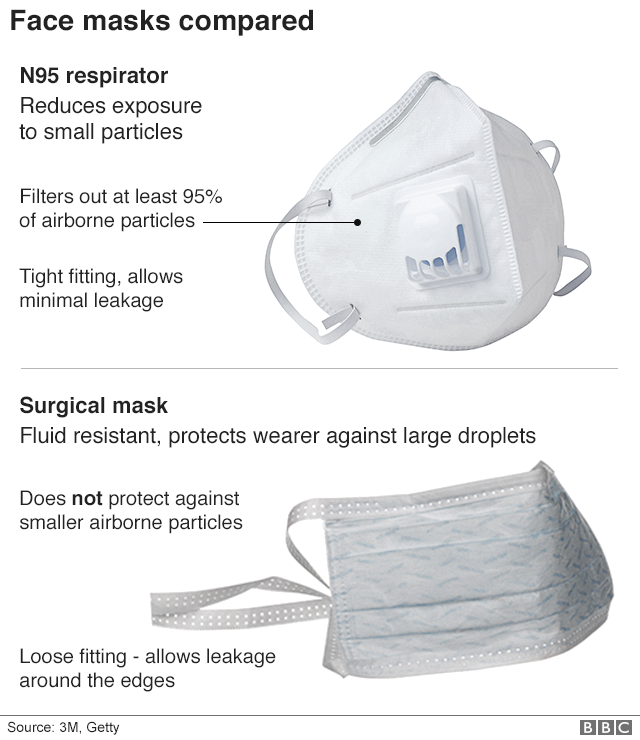
Facemasks help lower the risk of contracting a virus through aerosol transmission from a sneeze or a cough and provide some protection against hand-to-mouth transmissions (That’s keeping you from directly touching your mouth and nose when you wear a mask).
Respirators, which tend to feature a specialized air filter, and a blower and some with their own closed air system, are specifically designed to protect against potentially hazardous airborne particles and harmful gases.
The World Health Organization (WHO) states that only two types of people should wear masks: those who are sick and show symptoms, and those who are caring for people who are suspected to be infected. Nobody else needs to wear a mask… WRONG.
I thought these people had some common sense. What about the incubation period for disease and the third type of person who has contacted the Pathogen that is incubating in them, feels nor shows symptoms, but is as contagious as the sick. I am astounded that so little is known about the current Coronavirus pandemic, but these disease experts issue statements such as above that are ludicrous. The chart below from Matt Bracken confirms their mistaken beliefs.
Simply by talking, a person expectorates (spits out) droplets of spittle from the throat and or lungs whether they realize it or not. This is also known as being sialoquent, gleeking, hoicking or spewing phlegm. Regardless of the name you pick for this, what comes out of the human mouth just by speaking is sputum (infectious disease carrying droplets) if the person speaking is infected by a contagious disease.
Covering your mouth or burying your head in your elbow while coughing or sneezing, washing your hands and not putting your hands to your mouth, lips or face before washing them, may be helpful in contagious disease control… wear a Facemask!
Covering your mouth or burying your head in your elbow while coughing or sneezing, washing your hands and not putting your hands to your mouth, lips or face before washing them, may be more beneficial than a Facemask… but I believe… wear a Facemask!
I am an advocate of wearing at least an N-95 mask… that’s what everyone should do until an epidemic or pandemic subsides.
After you look at Matt Bracken’s DIY Facemask, realize this. HEPA (High Efficiency Particulate Air) filters are actually the equivalent or better than N-95 masks. Some are 99.7% effective at 0.3 microns. That fine of HEPA material may be difficult to breathe through and may defeat the purpose, I don’t know.
HEPA filters and cloth can be washed and reused. After having a HEPA Facemask on for a while, you will need to replace the cloth or clean it because there will be a buildup of Pathogens and unwanted particles.

If you learn how to properly clean them, you can reuse the filter, saving you money in the long run. You can clean and reuse them, even if the brand says to discard them after use, but be aware that after washing, they may not have the same full efficiency. A HEPA filter can be cleaned by gently wiping it with cold water, or cleaned by gently using a vacuum cleaner to suck away dust and debris from the surface of the filter, or by the steam or oven method below.
Water should not be used on HEPA cloth or filters other than dampening a soft cloth in water to wipe the outside surface with. Rinse and then squeeze the cloth to remove excess water. Continue rinsing the cloth and wiping the surface until it is clean. Allow the filter to air dry before placing it back in the filter.
Referring to a study published in the journal Annals of Occupational Hygiene in 2009 by Stanford University researchers, where they compared and suggested different methods for sterilizing N95 masks. Basically, the following is recommended:
DO sterilize Facemasks and HEPA cloth by:
- Heat in an oven for 30 minutes at 158 degrees Fahrenheit (70 degrees Celsius).
- Steam the mask with hot vapor from boiling water for 10 minutes.
DO NOT sterilize Facemasks and HEPA cloth by these methods…
- Do not use alcohol and chlorine [bleach]-based disinfection methods, these will remove the static charge in the microfibers in N95 facial masks, reducing filtration efficiency. In addition, chlorine also retains gas after de-contamination, and these fumes may be harmful.
- Microwaves tended to melt the masks and render them useless.
- Hydrogen peroxide and ultraviolet radiation appeared to be at least somewhat more effective, they wrote, “but it is not known if they would retain filtration, material strength and airflow integrity with repeated use.”
- Autoclaves (Equipment designed specifically for high pressure steam sterilizing of items) and soap and water soaking are all relatively ineffective.
Do not splash in your eyes or touch your face while cleaning your HEPA filter and wash your hands thoroughly with soap and water after laying out your filter to dry.
Matt Bracken’s Do-It-Yourself N-95 equivalent Facemask
Matt Bracken, former Navy SEAL Officer and Author Extraordinaire (www.EnemiesForeignAndDomestic.com) posted a chart and instructions for a Do-It-Yourself (DIY) Facemask on the internet that is probably better than what you can buy… and reusable.
This guy’s innovation and brilliance never fails to amaze me… see the Chapters in this book titled “Bracken on Night Fighting and controlling your turf” and “Bracken on Civil War in America and the CW2 Cube.”
Since the hysteria from any Catastrophic Event empties everything from store shelves, especially Facemasks, this will get you your Facemask… unless there’s a run on vacuum cleaner bags.
Matt’s DIY Facemask uses HEPA cloth found in vacuum cleaner bags and HVAC (air-conditioning) filters which removes 0.3 micron and larger particles. This is the equivalent of a N-95 respirator mask.

Other Personal Protective Equipment (PPE)
PPE refers to protective clothing, helmets and head gear, gloves, face shields, Facemasks, goggles, respirators and other equipment designed to protect the wearer from the spread of infection or illness.
Pathogen resistant clothing, eye wear, disposable coveralls, gowns, gloves and masks do more that create a barrier to Pathogens… hooded coveralls, eyewear and masks keep you from unconsciously touching your head and face, which has the majority of entry points for Pathogens. I will concentrate on Tyvek® here.
There are numerous types and brands of Pathogen resistant clothing and suits available to medical personnel and the homeowner. Some very expensive and some affordable. One quality dependable name is Tyvek® made by DuPont. From their website… “DuPont™ Tyvek® is a versatile material that is both durable and comfortable, providing an excellent barrier against dangerous fine particles and chemicals.” This material is used widely in the construction industry to waterproof materials while construction is ongoing.

However, they should add that single use Tyvek® suits can resist only minor chemical splashes and spills and are mostly for dry and dust particle protection. But these are great suits and very affordable. All kinds of garments are made out of Tyvek® and what you want is the full coverall with foot covering and hood… the Tyvek TY122 with Elastic Wrists, Hood and Skid Resistant Boots type Suit and are usually sold in boxes of 25 suits.
Uline is a great source for these and many other items at: www.uline.com
Tyvek® disposable coveralls are affordable for the homeowner at about $5 each. But consider if you’re going in and out of a Quarantined area numerous time a day for weeks on end you’d spend quite a bit of money to have enough suits. You can, however, wash these if you’re careful and follow these instructions… Hand wash with mild soap-No bleach. Or machine wash, gentle cycle, cold water. Drip dry only. Do not put in a dryer, do not dry-clean and do not use an iron on this fabric.
Fabrics of Tyvek® should not be used near heat, flame, sparks, nor in explosive environments.
As the garments are labeled they go like so; single-use garments and coveralls intended to be worn once are Type 10 Tyvek® and are paper-like, limited-use garments can be worn until they are damaged and reusable garments can be worn indefinitely which are Type 14 and Type 16 Tyvek® fabric-like. The latter are much more expensive. If you don’t have or can’t afford disposables, wear a combination of clothes and or coveralls with a hood as a stopgap… but you have to launder frequently and cannot remove from Quarantine areas until you do so.
Eyewear
As stated previously, Infectious Diseases can be transmitted through the mucous membranes of the eye (conjunctiva). These include viruses and bacteria including bloodborne viruses. Infectious agents are introduced to the eye either directly by blood splashes, aerosol transmission from others during coughing or from touching the eyes with contaminated fingers or other objects.
Eye protection provides a barrier to infectious materials entering the eye and is often used in conjunction with other personal protective equipment (PPE) such as gloves, gowns, masks or respirators.

This is the first choice, best eye protection, but expensive… Full-face Respirators. Full facepiece elastomeric respirators and powered air-purifying respirators (PAPRs) are designed and used for respiratory protection, but because of their design, they also provide highly effective eye protection as well. Selection of this type of PPE should be based on the Infectious Disease respiratory hazard, but will also provide optimum eye protection.
This is your second choice, because it’s affordable… Face Shields. Face shields are commonly used as an infection control alternative to goggles. As opposed to goggles, a face shield can also provide protection to other facial areas. To provide better face and eye protection from splashes and sprays, a face shield should have crown and chin protection and wrap around the face to the point of the ear, which reduces the likelihood that a splash could go around the edge of the shield and reach the eyes.
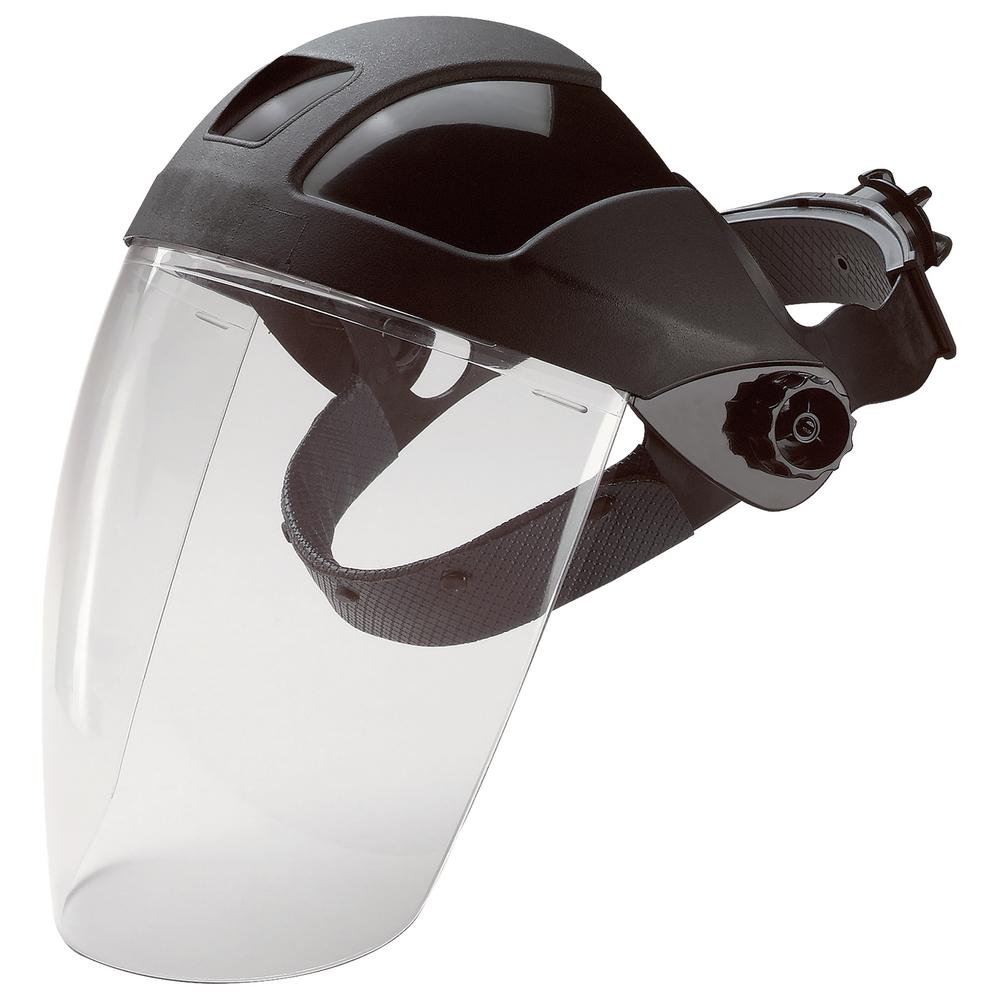
This is your third choice, because it’s also affordable… Goggles. Properly fitted, indirectly-vented goggles with a manufacturer’s anti-fog coating provide the most reliable practical eye protection from splashes, sprays, and respiratory droplets. Newer styles of goggles may provide better indirect airflow properties to reduce fogging, as well as better peripheral vision and more size options for fitting goggles to different workers.

Directly-vented goggles may allow penetration by splashes or sprays; therefore, indirectly-vented or non-vented goggles are preferred for infection control.
Many styles of goggles fit adequately over prescription glasses with minimal gaps. However, to be effective, goggles must fit snugly, particularly from the corners of the eye across the brow. While highly effective as eye protection, obviously goggles do not provide splash or spray protection to other parts of the face.
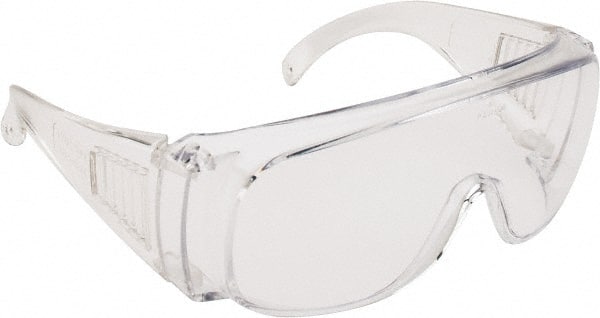
This is your last resort and worst choice… Eye glasses and safety glasses. Eye glasses and safety glasses provide impact protection, more so for safety glasses. They do not provide much of splash or droplet protection as goggles and generally should not be used for infection control purposes unless that’s all you have. Buy the kind like in the photo that wrap around and cover the top, sides and bottom of your orbs as much as possible.
Hand protection
Since your hands touch just about everything, you must wear gloves while caring for the sick and in Infectious Disease areas. Disposable “exam gloves” and reusable rubber gloves protect against potentially Infectious Disease, such as those transmitted by contamination of touch, vomit, blood, body fluids and fecal matter. The protection offered by a glove, or it’s barrier effectiveness, is the ability of the glove to withstand viral penetration. Make sure you get the proper sizes for rubber reusable gloves and disposable exam gloves.
Glove Types
- Latex gloves
- Nitrile gloves
- Vinyl gloves
- Playtex “Living” Reusable Rubber Cleaning Gloves

Medline Aloetouch® disposable gloves moisturize and soothe dry, chapped hands and come in nitrile, vinyl and latex versions. Medline Aloetouch® gloves moisturize and soothe dry, chapped hands.
Newer second and third-generation vinyl gloves are softer and stronger. Latex and nitrile gloves are even more durable. Nitrile gloves also have chemical barrier properties that give them an advantage when handling certain drugs or chemicals.
Glove use does not eliminate the need for proper handwashing. In order to maximize the control of infectious Pathogens, hand hygiene should include handwashing. Dryness and irritation can result from wearing any glove and washing hands with soap and water.
Rubber forearm length cleaning and dishwashing gloves will work if you can’t obtain a supply of disposable rubber gloves. They are harder to work with than a tight and close fitting disposable glove, but they will work. A “large” hand may accept a “small” sized disposable exam glove with some careful effort, not to say it won’t rupture later, but a “large” hand will not fit into a “small” sized reusable rubber glove. Conversely, a “small” hand will have difficulty working with a “large” sized reusable rubber glove.
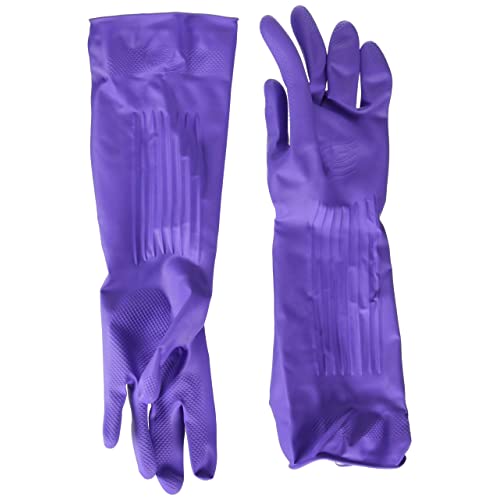
Playtex Reusable Rubber Cleaning Gloves
Put a rubber band part way up the wrist on sleeves that overlap the glove to seal off the sleeve and the glove. This should be done when wearing non-elastic wrist band PPE garments.
If you can’t obtain a supply of disposable gloves, I recommend Playtex “Living” Reusable Rubber Cleaning Gloves which are made with a latex/neoprene/nitrile formula for strength and durability. They are reusable only if you disinfect them before each use. Use a mild bleach solution to wipe them down or steam for 10 minutes on the outside only, as they have a soft cotton lining that you do not want to get wet or contaminate.
Do not buy rubber gloves with the knit wrist band or nitrile or vinyl knit cloth combination work gloves. All of this being stated, if it is a “Grid Down” world and a Collapse of Society, just about any glove is better than none in time of epidemic or pandemic, nitrile work gloves included. They just have to be washed and disinfected in some manner.
Footwear
The point of this part of the book is to concentrate on Footwear… shoes as disease spreading mechanisms. It is an attempt to get all to realize that Infectious Diseases and their Pathogens literarily “walk” out of infected areas by Footwear and on into safe or un-infected areas.
As Kelly M. Pyrek stated in an article he wrote on “Pathogen transmission from Infectious Disease areas…” “It sounds like the beginnings of a riddle: What do we wear and walk on daily but never truly think about, especially in terms of Pathogen transmission?” The answer… Shoes, aka Footwear.
Shoe cover types:
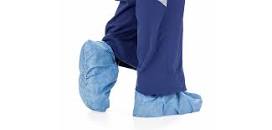
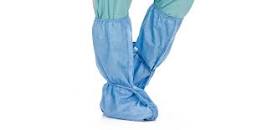
Disposable ankle and calve high elastic top shoe covers.

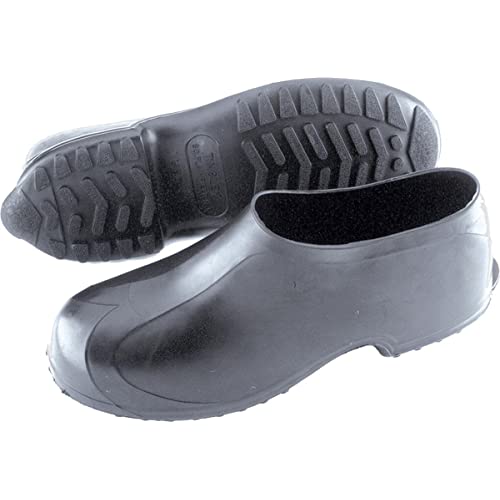
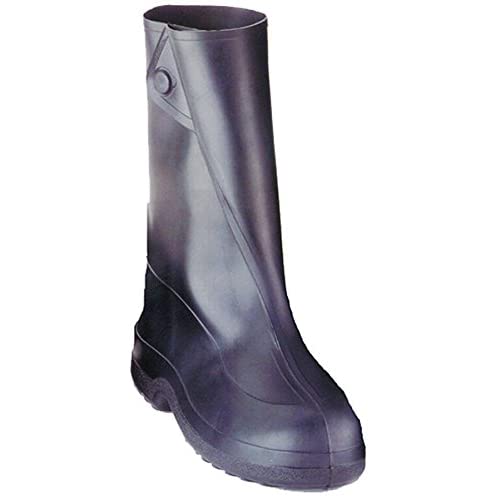
Rubber shoe covers; high, ankle high shoe covers to calve high boots.
Since your feet go where ever you go, you must wear shoes of shoe coverings while caring for the sick and in Infectious Disease areas and leave them just outside of areas not infected. Disposable “shoe covers” and reusable rubber shoes protect against potentially Infectious Disease.
Remember tracking mud into your house and your Mother’s reaction to it. If you think back, it was just about everywhere. This is minimized with a shoe covering if used properly. A simple rubber overshoe, or a disposable shoe covering will prevent “tracking” Pathogens outside of infected areas.
If you don’t have disposable shoe covers or rubber shoe covers, use slip on type shoes such as loafers, that have a smooth surface and sole that can be easily wiped down with alcohol wipes. Do not use open toed shoes or flip-flops. Dedicate these shoes to wear only in disease infected areas.
You would be astounded in what the lowly shoe gets contaminated with by “stepping in it.” This is why it is only considered good manners to take shoes off when entering living areas in some cultures.
I still don’t understand America and most Industrialized Societies… shoes aren’t parked by the entrance door or at the garage to house entry… they’re worn all around living areas… what is on them, be it dangerous or not, is literarily “wiped” off on carpets and tracked all over hard surface floors.
Whatever contacts a floor of an area where Infectious Disease is prevalent, especially Footwear, becomes contaminated to some degree. When you walk out of that contaminated area into uncontaminated areas, your Footwear transfers Pathogens with every step you take and leaves Pathogens wherever and on whatever your Footwear has contacted.
Regardless of surfaces like floors being scrubbed and cleaned even daily, Pathogen contamination reoccurs quickly. That is not to convey the thought that Quarantine areas and floors should not be cleaned… to the contrary. When cleaning infected areas, use methods that don’t create aerosol or mists that can further spread Pathogens. Floors become contaminated from equipment wheels also going in and out of infectious areas.
Those in Quarantine, must remain in Quarantine without disposable Footwear. Both non-slip single-use socks and disposable Footwear worn by the sick simply transfers Pathogens by them from Quarantine areas to areas uncontaminated. Those not infected and sick, transfer Pathogens from to floor to their bed when they return to it.
Ultraviolet UV-C devices can decrease shoe sole contamination significantly and hence decrease floor contamination significantly.
Full MOPPS gear
The U.S. Military uses what is called MOPPs gear. The acronym stands for “Mission Oriented Protective Posture” (MOPP) and is further designated the Joint Service Lightweight Integrated Suit Technology (JSLI) and comes with and Nerve Agent Antidote Kits (NAAK). OOOOH! …the military does love its acronyms!

MOPPS gear consists of a suit and headgear that is impenetrable by known biological and chemical agents. The clothing portion has a barrier that will keep out any known Pathogens or chemical agents and irradiated dust particles. Wearing the full suit and gear is very uncomfortable in the heat of the middle east desert in Iraq as my Son can testify to.
MOPPS gear consists of a mask, overgarment big enough to fit over combat fatigues, boots and gloves. The masks are carried in a protection carrier that prevents damage when not wearing. The over garment can contain charcoal that neutralizes some chemical agents and a type of paper that detects chemical agents can be affixed to the suit. The MOPPS gear is the absolute in effectiveness PPE, but the cost of is prohibitive and the use of these in your NPP would be extreme.
#2… control of the spread of Infectious Diseases
Your second line of defense against Infectious Disease will be to control the spread of the disease. This is also called “Flattening the curve.” It is employing all your arsenal of Infectious Disease measures… using all four lines of defense against Infectious Disease to minimize and eradicate it:
#1A Avoidance #1B Hygiene procedures #1C Disinfecting #1D Physical barriers #2. Control #3. Quarantine #4. Treatment 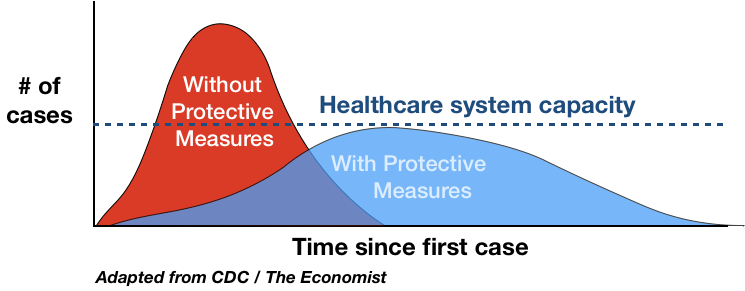
The above chart shows how the healthcare system becomes overloaded and cannot cope with the sick from and epidemic or pandemic. The hope is that people wear protective Facemasks, Eyewear protection and use control procedures to keep the number of sick under the capacity of the healthcare system. If they are overwhelmed in their capability to care for the sick, the epidemic or pandemic gets exponentially worse… totally out of control… and soon extremely high numbers of people will unnecessarily die from deadly Infectious Disease.
Let’s look at the procedures used in China to control the spread of the quite infectious Coronavirus disease. These are the rules spiced with some citizen commentary, of what Chinese authorities had to enforce to keep the fatality rate low. However horrible these were to people and however much they suffered from them… these procedures apparently worked to stop the spread of the Coronavirus.
Chinese City/Province Covid-19 Quarantine Rules to control the Coronavirus
1. Chengdu (Sichuan) 16.33 million people have been locked down for about a month after three weeks of travel restrictions.
- Apartment complex has issued small cards, with a code that is scanned each and every time we leave and enter.
- No one without this card is permitted entrance into the complex.
- Masks are absolutely required and goggles and gloves are strongly encouraged.
- Until quite recently, restricted in leaving the complex to 3 times per week, and then only to buy groceries at one of two local stores.
- Travel beyond these two supermarkets is greatly discouraged and most other items you are told to have delivered to the front gate of the complex.
- If you are a delivery driver you work singly on a motorbike and are allowed access to the roads and given a special pass. These drivers are required to wear helmets with a face shield, masks, and gloves.
- At present the only open stores are grocery and convenience stores and these have restricted hours, and reduced staff.
- All other shops are closed.
- Closed movie theaters, coffee shops, sit down restaurants, gyms, swimming pools, bars and nightclubs, etc.
- All weddings or other ceremonies associated with large groups have been cancelled.
- There are economic effects but most are complying.
- People in my complex have been confirmed to have the virus. When this happens you are given the option to go to a Quarantine center OR they will put a paper tape over your door and you can stay in your apartment for a period of time.
- The tape is checked daily and if it is torn you will be taken to Quarantine for violating your agreement (authorities proceed to replace the tape with welding apartment doors shut)
- This is what you are seeing on YouTube with people being forcibly taken – it is because they have violated Quarantine.
- Probably a warning first.
- Food and essentials are then brought to you daily and delivered by special staff through an apartment outside window.
- Work and education conducted remotely (internet).
- Masks are in tight supply and can be quite expensive although cheap masks are certainly for sale from unscrupulous individuals.
- Streets are empty – this is unprecedented.
#3… containment by Quarantine
Your third line of defense against Infectious Disease will be a Quarantine or segregation of persons infected with the disease from those not showing sickness. Quarantine can be voluntary or enforced. Many of the procedures in this Chapter to defeat Infectious Disease are interrelated and interlocked with each other.
Dictionary Definition
Quarantine
noun
quar·an·tine \ ˈkwȯr-ən-ˌtēn \
Definition of Quarantine: A restraint upon the activities or communication of persons or the transport of goods designed to prevent the spread of disease or pests, A place in which those under Quarantine are kept, A state of enforced isolation, a period of forty days.
Origin: Mid-17th century: from Italian Quarantine, “forty days,” from quaranta “forty.”
Control and Quarantine are close cousins… however, Quarantine is “locking down” the sick so to speak… confining them to a specific area that is sealed off from the areas that people not sick inhabit and restricting the sick’s movement from that Quarantine area.
See by the chart below what happens when you do nothing to control the spread of a disease infection. A proper Quarantine area should have an “ante-room” or area preferable that sealed off the Quarantine area and other home “safe areas” where those not infected live.

The ante-room is the room you leave your PPE in and change in. It is an in between area to ensure Pathogens do not easily transfer out of the Quarantine area of the sick to the safe areas where those not infected stay.
Totally separate the Quarantine’s eating utensils and dishes and keep them in the Quarantine area, taking food to their dishes… not their dishes to your food. Wash the sick’s dishes in another sink or a pail in the Quarantine area and rinse them in a separate stronger bleach solution after washing.
Your NPP Quarantine Plan must separate, segregate, keep each and all Group Members apart and in a Mindset of Awareness
Institute the following procedures in addition to those listed in “#1… keeping the disease out of your body…”
- Quarantine. During an infectious period, procedure should be that any members of your NPP or family that are infected and sick have been segregated and Quarantined from the rest of the NPP in a home or in a separate facility or room. Defeating Infectious Disease takes a mindset of awareness that each person must have until the disease is defeated.
- Treat everything as if it is contaminated in your NPP, home or work place.
- Your NPP Watch Center. Your NPP Watch Center is a central gathering point for people and a place that all Group Members will visit in rotating their shifts. It is the perfect place to spread any Infectious Disease if your NPP gets it. It must be cleaned and disinfected by each shift change. All shift Group Members must use Facemasks, Footwear, Eyewear and change their clothes before starting their shift and after ending their shift. No eating or smoking can take place in the NPP Watch Center. The strongest possible segregation should be taken there between Communications, Intelligence and other personnel. If your NPP contacts an Infectious Disease, any supplies stored in the Watch Center must be moved to one or more other locations.
- All NPP Group Members must wear an N-95 equivalent or better mask to filter out spores and aerosol transmissions from others coughs and sneezes when in an area that has Infectious Disease.
- Everyone must keep their distance from other people… six foot or greater… from even those in your family during this period. Just stay put and move around as little as possible until the Infectious Disease runs its course. With the exception of duties necessary by those not sick, the entire NPP must voluntarily segregate for the period of time required by your Medical Leader. As stir-crazy as this makes people… it is a necessity of life… or death.
- You have to block off common air flow cooling and heating HVAC vents in a home Quarantine room from the rest of the living area. Shut the vent off and duct tape over them. Use space heaters and small, low volume fans in the Quarantine area. In hot weather, move the sick outside to a screened in area if possible.
- When having a Quarantine in your home, you must treat that segregated room the same as if it is an infected area outside your dwelling.
- Daily maintenance of Quarantine areas. This daily cleaning should be performed more frequently around all entrance areas and less frequently farther into the center of the Quarantine area.
- Wash dishes and eating utensils used by those not sick in your home with soap and hot water and rinse in a mild bleach solution after washing. It would be prudent to assign dishes and silverware to each individual person in your home which they alone use and clean until the contagion ends. If you have people in Quarantine in your home, totally separate their eating utensils and dishes, taking food to their dishes and not their dishes to your food. Wash the sick’s dishes in another sink or a pail in the Quarantine area. Rinse them in a separate stronger bleach solution after washing.
- Frequent and routine hand washing immediately after leaving the Quarantine area is an absolute necessity. This is a valuable safeguard in containing and preventing infection by Pathogens, especially before eating, smoking or associating with others.
- Mothers nursing babies and caring for young children needing mother’s care, must stay with their mother and keep their distance from others, even siblings and Fathers. If you have to segregate children under lock and key by room and treat them as if they are sick for this Quarantine period, do so. The consequences of not doing so, if the Infectious Disease is extremely lethal, is spreading the disease to the entire family, sickness and or death of your entire bloodline.
- Remove contaminated PPE (Personal Protection Equipment) while still in the ante-room and immediately use nearby on-site showers if possible.
- Have individual storage areas in the ante-room for each person caring for the sick.
- Footwear. Change shoes when leaving Quarantine areas. Do not wear flip-flops in the Quarantine area. Do not wear socks or go barefoot. Those not infected and sick, transfer Pathogens from to floor to their bed when they return to it if they wear socks, Footwear or go barefoot to bed. Use shoes that slip on and off.
- Launder and clean all bedding and clothes of the sick and PPE frequently and use proper procedures to dispose of contaminated PPE. Use bleach and run your washer an extra cycle on empty afterwards.
- Remove all items contaminated by the sick and dispose of by burying or burning if possible.
- Remove the dead and bury the bodies immediately (See the Chapter “Hygiene, sanitation, caring for the dead”).
- Prohibit those working in or around Quarantine areas from eating, drinking or smoking.
#4… treatment of infectious Pathogens
Your fourth line of defense against Infectious Disease will be treatment. The more people get over the disease… the less people will be contagious and the less it will spread. Generally, Pathogens don’t like and will not survive exposure to sunlight or Ultraviolet light. Warm weather or cold weather have a definite bearing on the rate it spreads.
A major difference between the treatment of a virus produced disease and a bacteria produced disease
Virus produced diseases. By a number of standards of what classifies a genetic material “alive” or “dead,” a viral Pathogen is considered to be a non-living entity. It has components of living matter, but in essence is not alive. A virus cannot be killed with antibiotics… only antiviral medicines can treat a person infected by a viral disease by slowing or stopping its replication. Vaccines, relative to the specific virus, can prevent infection by the virus. Disinfectants can disable, disrupt or nullify the components of a virus outside the body so they cannot replicate if they get inside you.
Bacteria produced diseases. A bacterial disease can be treated with antibiotics and other medicines. In formal writing “bacterium” is the singular form and “bacteria” is the plural form. Like earlier with “whom” …I’m throwing “bacterium” out the window too… so, they are called bacteria or bacterial hereafter. You kill bacterial disease Pathogens outside the body with disinfectants.
Do your best to see that your Neighborhood Protection Plan has a doctor, Pa-C (Physician’s Assistant-Certified), a Registered Nurse (RN) or EMT person amongst your Group Members… and have these people teach, receptive others, on the basics of medicine and treatments.
Resources on Infectious Diseases
The care and treatment of people fully into the stages of Infectious Disease sickness to deal with fever reduction, diarrhea, uncontrolled vomiting, skin sores, respiratory congestion and ventilation, pneumonia, dehydration, muscle and joint pain, fatigue, coughing, abdominal pain requires other books to explain. You especially have to know how to identify the symptoms of Infectious Diseases, the incubation period, how contagious the disease is, the control of it, Quarantine and treatment procedures.
One book that covers much of this is the “Special Operations Forces Medic Handbook.” This Medical Handbook covers treatment of most of the symptoms for disease, buy it for about $59 at:
https://bookstore.gpo.gov/products/sku/008-070-00810-6
You can buy these on Amazon, Ebay and from other book sellers. Some are:
“Control of Communicable Diseases Manual” by Heymann.
A book more for “Grid Down” scenarios and for untrained medical personnel, doctors and medically trained NPP Group Members written by William Forgey, M.D. is “The Preppers Medical Handbook.” Buy it for $19.95 at:
https://www.amazon.com/Preppers-Medical-Handbook-William-Forgey-ebook
An Infectious Disease handbook for doctors and trained medical personnel is:
“Washington Manual Infectious Disease Subspecialty Consult (Washington Manual Subspecialty Consult) Third Edition,” by Dr. Nigar Kirmani MD (Author), Dr. Michael Durkin MD (Author), Dr. Stephen Liang MD (Author)
Two other free resources to download and print a hardcopy (Again, do not rely on your computer to function after some Catastrophic Events) of the Kansas State “Kansas Handbook of Communicable Diseases” which is on the internet at:
http://www.kdheks.gov/epi/download/Kansas_Classroom_Handbook_of_Communicable_Diseases.pdf
Or, the manual from the State of New Hampshire titled: “Disease Handbook for Childcare Providers” which is also on the internet at:
https://www.dhhs.nh.gov/dphs/cdcs/documents/handbook.pdfDisease
How is all this supposed to function in your NPP?
As you can see by the above and will see below, Infectious Disease or Chemical Warfare is almost an unmanageable disaster on their own. But couple either of them with civil unrest, food or water shortages, electrical grid failure and or assaults by outsiders on your NPP… and they make you believe you’re in the middle of a Catastrophic Apocalyptic Armageddon Event… the end of the world.
Your NPP must begin to stamp out an Infectious Disease IMMEDIATELY with stringent rules and actions. Your NPP will be decimated or completely fail if you do not do this.
While your Neighborhood Protection Plan is active, if contagious disease pops its ugly head up infecting Group Members, your Medical Section and Sixth Section Medical Leader’s authority is elevated to that over the NPP Leader with regards to what controls are necessary within the NPP. What the Sixth Section Medical Leader says, goes as temporary rules… not to eclipse the NPP Leader’s defense of the NPP. Nor does your NPP Council have any authority over the Sixth Section Medical Leader in time of endemic or epidemic of Infectious Disease.
The Sixth Section Medical Leader and his Junior Leader and all medical members of the Medical Sixth Section must have a comprehensive plan for disease prevention and especially plans for a Quarantine of Group Members that contact any transmittable diseases.
The NPP’s Quarantine plan must have a Triage System when medicines and treatment supplies become in short supply, not be name of Group Members, but by category of age, knowledge and importance to the NPP and health. The NPP Quarantine plan must also have a hygiene implementation plan and hygiene policies instituted during endemic or epidemic of Infectious Disease for human waste and trash.
The Sixth Section Medical Leader oversees the burial of the dead. The Medical Leader must ensure that the deceased are properly and deeply buried. See the Chapter “Hygiene, sanitation, caring for the dead.” Pay special attention to procedures for burial of the dead from Infectious Disease.
Chemical Warfare Catastrophic Events
A Chemical Warfare Catastrophic Event would require the resources of the Federal Government or mucho money and time to implement. In short… some Catastrophic Events are too overwhelming in their effect… which makes them too complicated and expensive for you to reasonably prepare for. If they do happen… you can only pray these will not affect your area. A Chemical Warfare attack, like “Surviving massive ash ejection,” is one of these Catastrophic Events.
The first part of this Chapter deals with biological Infectious Disease… whether by nature or Biological Warfare borne. The following Chemical Warfare attack equipment and solutions may be within your budget… and you may or may not want to invest in preparing for this specific event.
Chemical Agents. People who have had extensive military training in NBC… Nuclear, Biological and Chemical Warfare generally agree with this. Their knowledge of the complexity of Chemical Warfare and those types of agents bring me to the following conclusion… you are wasting your money preparing for these types of attacks.
Even though there are many types of “Gas Masks” and “Chemical Suits” on the civilian market for sale, you must realize that these are not “A One Size Fits All” solution…
- One size of these masks does not fit all and especially not small children. Each mask requires an airtight seal to the skin around the face… these will not work for children and most people don’t realize that a two-day growth of beard will affect the proper skin seal around your face.
- “Gas Mask” filters are specific to the type of agent encountered.
- “Chemical Suits” made for the U.S. Military being sold in surplus or sporting goods store are sold to hunters as “scent blocking” suits. These are charcoal based lined suits that are probably no longer effective for their original purpose as the charcoal lining expires after a period of time.
- Eastern European and Russian made “Rubber Chemical Suits” are also available on the civilian market. These tear or puncture easily and wearing this type of rubber suit for an extended period of time is an experience in itself… like being the object of what’s cooking in a slow cooking crock pot.
What good some of these things will do you… the Author doesn’t know. Maybe it will comfort you to know how long it will be until you and your family members are watching each other fatally bleed through the nose and other body orifices or writhe dying from nerve agents. That’s sarcastic and mean sounding, probably from my ignorance of Chemical Warfare and the horror of what I’ve read about it.
If your NPP has the inclination and the money to fully concentrate time on Chemical Warfare, you can prepare for this event… but for the average American, the learning curve is too steep and too expensive to prepare for. Therefore, it is my opinion that you should focus on other needs for survival from other Catastrophic Events.
You’d be better off spending the money for more water storage and treatment, stored food, medicine, weapons, ammunition and other items stated in preparing for a Catastrophic Event that is more probable and survivable.
In a nutshell… preparation for Catastrophic Events comes down to “Beans, Bullets, Bandages… and a Faraday Cage” for an EMP Catastrophic Event. The common thread for all Catastrophic Events is “Beans, Bullets and Bandages” in all Catastrophic Events. Have plenty of each of them… and have an organized effort and Survival Mentality that your NPP formulates, institutes… and practice trains with.
What’s in the Civil Defense Manual?

